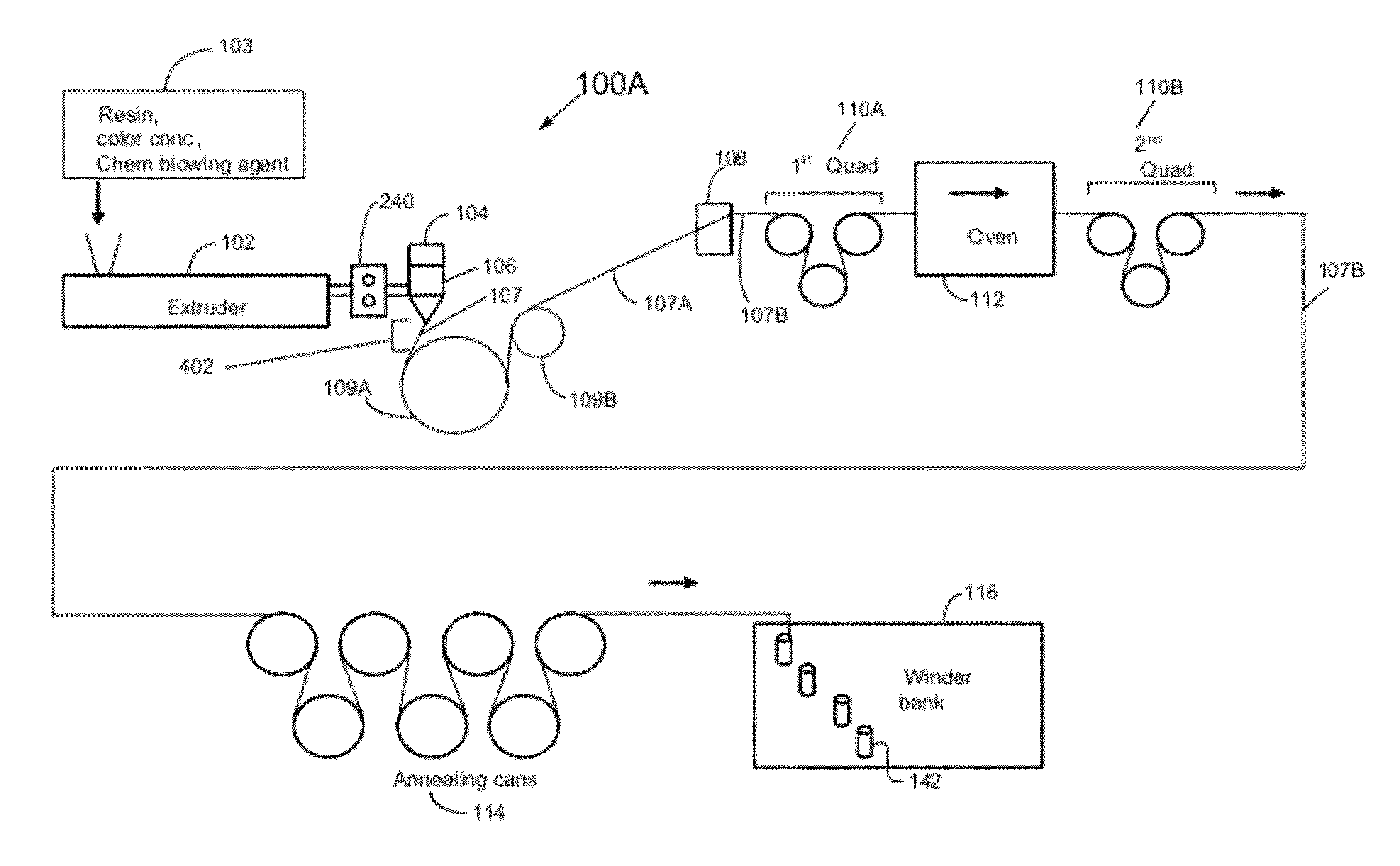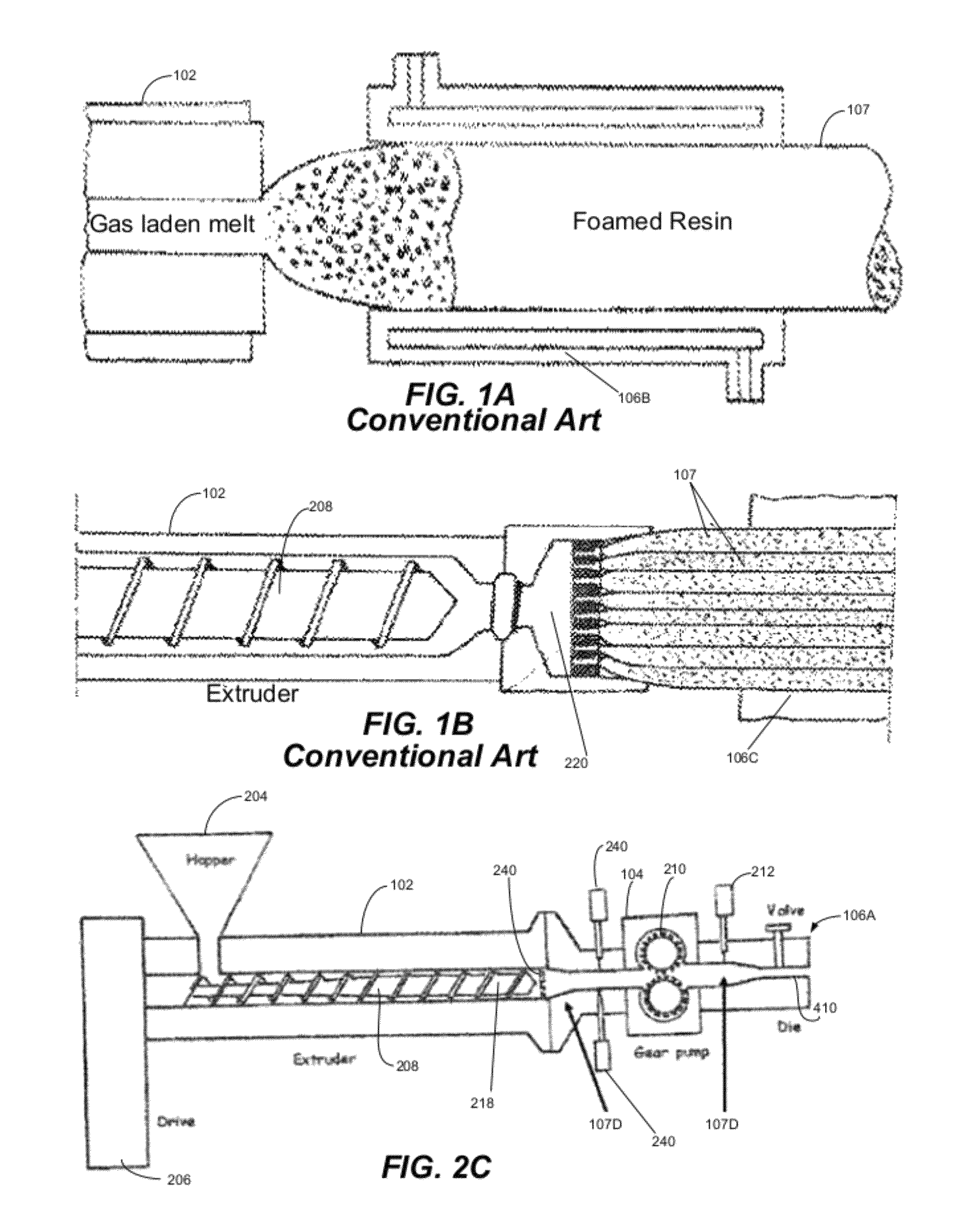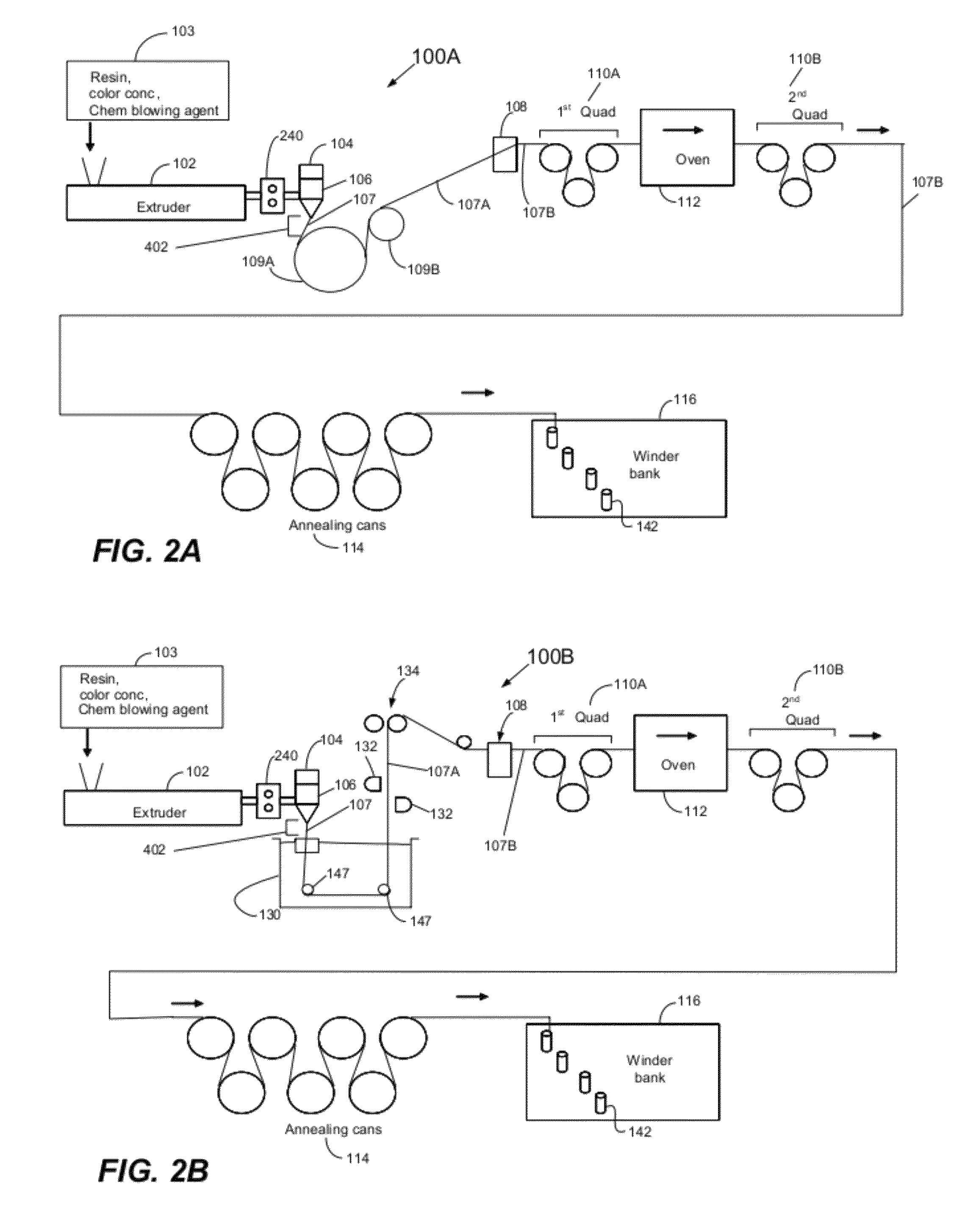Method and system for manufacturing foamed polyolefin tapes at cost effective line speeds
a polyolefin tape and line speed technology, applied in the field of foamed, oriented tape yarn production, can solve the problems of reducing the strength of the starting tape, not providing information on a sequence of specific steps and/or processes, and much of the conventional art does not articulate how these foamed tapes can be manufactured. , to achieve the effect of high surface to volume ratio, good property profile and high haul off speed
- Summary
- Abstract
- Description
- Claims
- Application Information
AI Technical Summary
Benefits of technology
Problems solved by technology
Method used
Image
Examples
example 1
Approximate Speed of about 1000 fpm for Producing Warp Yarn
[0189]A 4.5-inch single-screw extruder with a 28:1 L / D was charged with about 97.9 parts by weight of a polypropylene homopolymer resin with a MFR of about 3.5, about 1.6 parts of a beige pigment masterbatch (SCC 16234 for Standridge Color Corp). and about 1.5 parts of a chemical blowing agent masterbatch (Hydrocerol® 3034 from Clariant Masterbatch GmbH). The blowing agent masterbatch was about 16% active and based on a citric acid / bicarbonate mixture. The temperatures of extruder barrel zones increased from about 394° F. to about 464° F. progressively from the throat to the discharge port. The molten mixture was discharged under pressure into a transfer tube attached to four spinning heads, each of which contained a melt pump and a circular spinneret with 90 rectangular holes. The temperatures in the transfer tube, individual melt pumps on each spinning head, and each spinning head were maintained in the range of about 420 ...
example 2
Approximate Speed of about 875 fpm for Producing Fill Yarn
[0191]A 6-inch single-screw extruder with a 28:1 L / D was charged with about 97.1 parts by weight of a polypropylene homopolymer resin with a MFR of about 3.5, about 1.6 parts of a beige pigment masterbatch (SCC 16234 for Standridge Color Corp) and about 1.3 parts of a chemical blowing agent masterbatch (Hydrocerol® 3034 from Clariant USA). The blowing agent masterbatch was about 16% active and based on a citric acid / bicarbonate mixture. The temperatures of extruder barrel zones were about 420° F. in the first zone and about 441 to about 464° F. in barrel zones 2 through 6. The molten mixture was discharged at a temperature of about 450° F. under pressure into a transfer tube attached to a melt filter, melt pump and an 80-inch wide coathanger film die. The temperatures in the transfer tube, melt pump and die were maintained at about 450° F.
[0192]The pressure was about 3300 psi at the end of the extruder, about 2000 psi at the ...
example 3
Approximate Speed of about 1054 fpm for Producing Fill Yarn
[0194]A 6-inch single-screw extruder with a 28:1 L / D was charged with about 96.7 parts by weight of a polypropylene homopolymer resin with a MFR of about 3.5, about 1.6 parts of a beige pigment masterbatch (SCC 16234 for Standridge Color Corp). and about 1.7 parts of a chemical blowing agent masterbatch (Hydrocerol® 8697 from Clariant USA). The blowing agent masterbatch was about 12% active and based on a citric acid / bicarbonate mixture. The temperatures of extruder barrel zones were about 374° F. in the first zone and about 423 to about 482° F. in barrel zones 2 through 6. The molten mixture was discharged at a temperature of about 430° F. under pressure into a transfer tube attached to a melt filter, melt pump, and an 80-inch wide coathanger film die. The temperatures in the transfer tube and melt pump were about 430° F., and the temperature of the die was about 415° F.
[0195]The pressure was about 2550 psi at the end of th...
PUM
| Property | Measurement | Unit |
|---|---|---|
| thickness | aaaaa | aaaaa |
| distance | aaaaa | aaaaa |
| distance | aaaaa | aaaaa |
Abstract
Description
Claims
Application Information
 Login to View More
Login to View More - R&D
- Intellectual Property
- Life Sciences
- Materials
- Tech Scout
- Unparalleled Data Quality
- Higher Quality Content
- 60% Fewer Hallucinations
Browse by: Latest US Patents, China's latest patents, Technical Efficacy Thesaurus, Application Domain, Technology Topic, Popular Technical Reports.
© 2025 PatSnap. All rights reserved.Legal|Privacy policy|Modern Slavery Act Transparency Statement|Sitemap|About US| Contact US: help@patsnap.com



